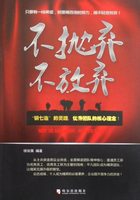For the same reason the development of the embryo takes place in the female; neither the male himself nor the female emits semen into the male, but the female receives within herself the share contributed by both, because in the female is the material from which is made the resulting product.Not only must the mass of material exist there from which the embryo is formed in the first instance, but further material must constantly be added that it may increase in size.Therefore the birth must take place in the female.For the carpenter must keep in close connexion with his timber and the potter with his clay, and generally all workmanship and the ultimate movement imparted to matter must be connected with the material concerned, as, for instance, architecture is in the buildings it makes.
From these considerations we may also gather how it is that the male contributes to generation.The male does not emit semen at all in some animals, and where he does this is no part of the resulting embryo;just so no material part comes from the carpenter to the material, i.e.the wood in which he works, nor does any part of the carpenter's art exist within what he makes, but the shape and the form are imparted from him to the material by means of the motion he sets up.It is his hands that move his tools, his tools that move the material; it is his knowledge of his art, and his soul, in which is the form, that moves his hands or any other part of him with a motion of some definite kind, a motion varying with the varying nature of the object made.In like manner, in the male of those animals which emit semen Nature uses the semen as a tool and as possessing motion in actuality, just as tools are used in the products of any art, for in them lies in a certain sense the motion of the art.Such, then, is the way in which these males contribute to generation.But when the male does not emit semen, but the female inserts some part of herself into the male, this is parallel to a case in which a man should carry the material to the workman.For by reason of weakness in such males Nature is not able to do anything by any secondary means, but the movements imparted to the material are scarcely strong enough when Nature herself watches over them.Thus here she resembles a modeller in clay rather than a carpenter, for she does not touch the work she is forming by means of tools, but, as it were, with her own hands.













